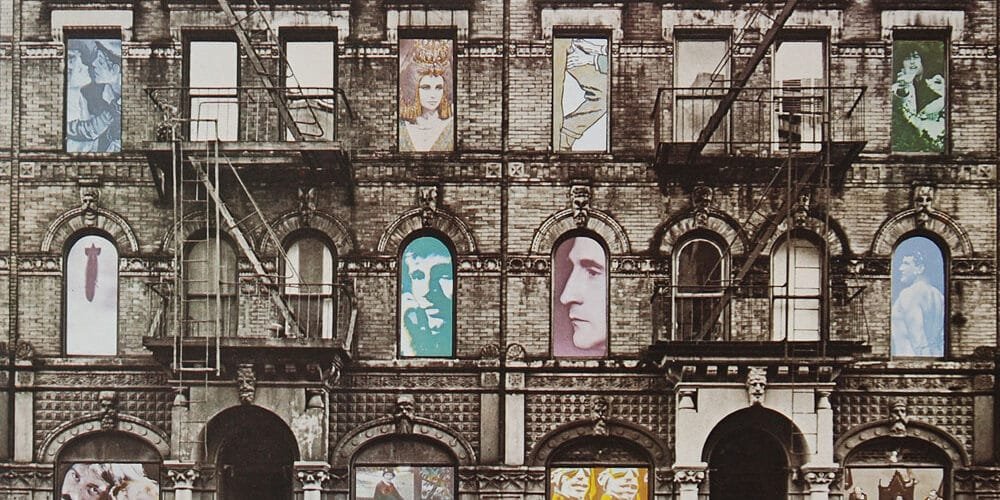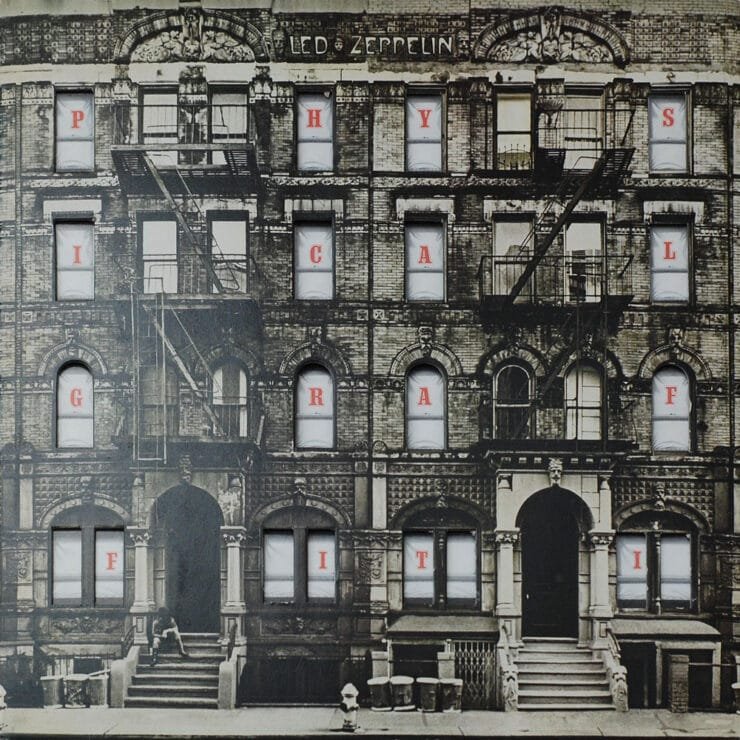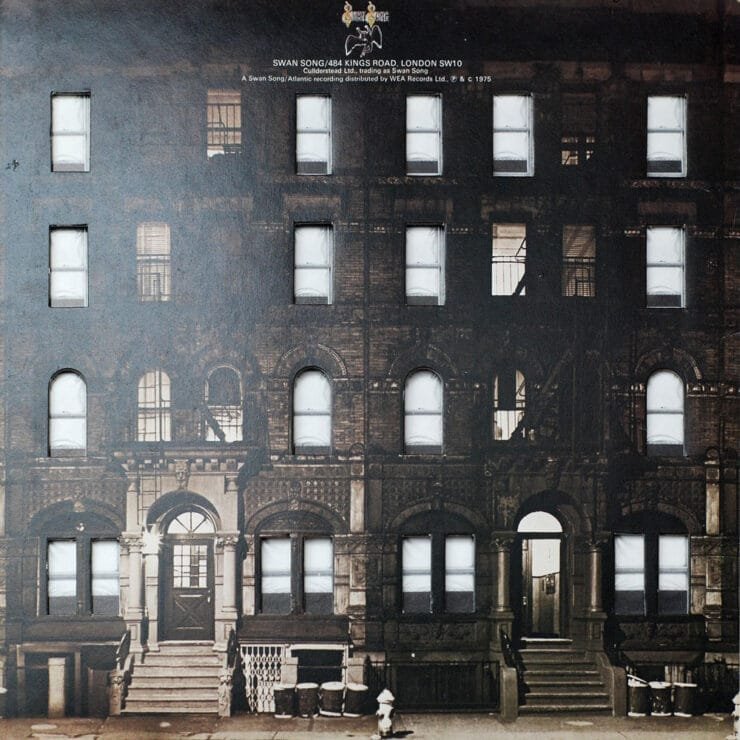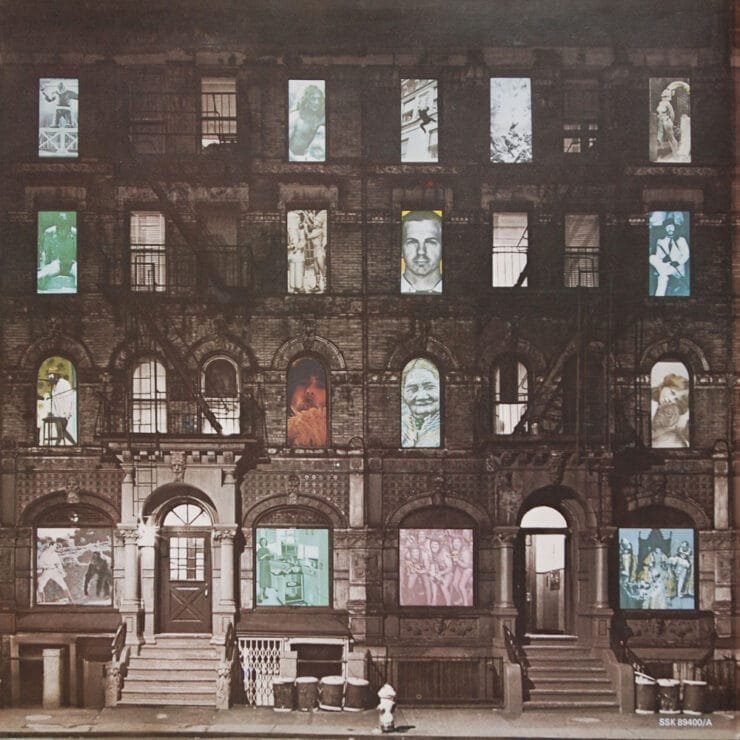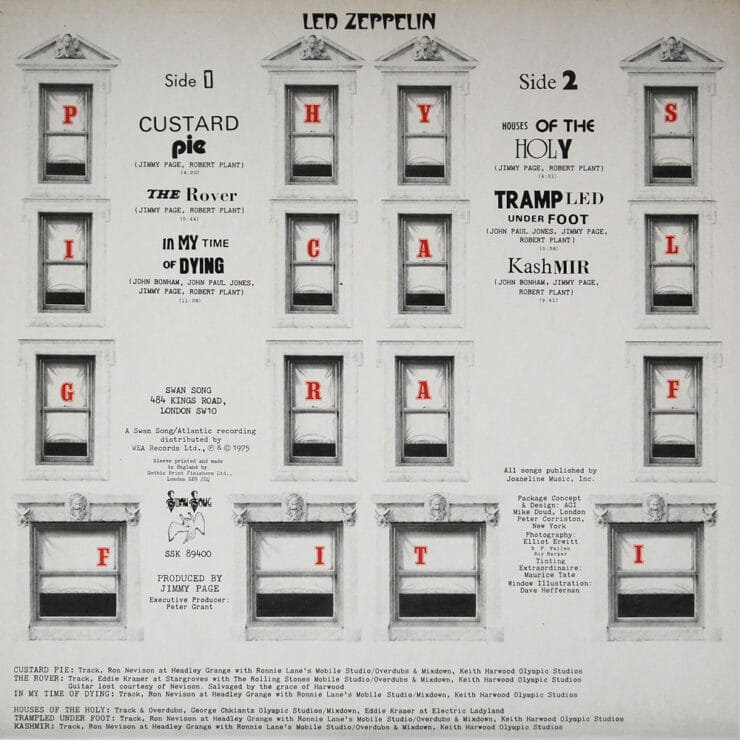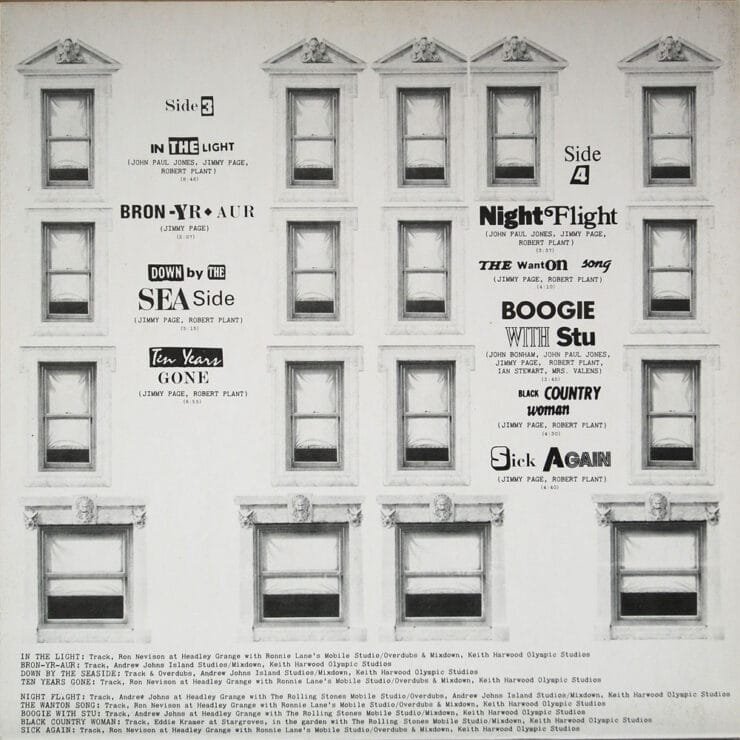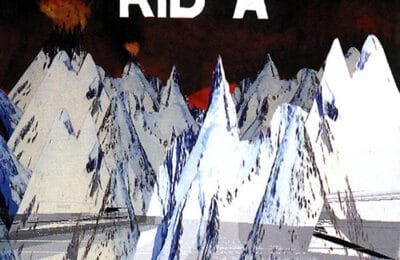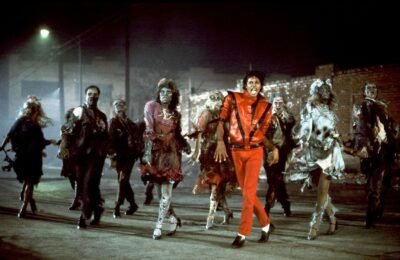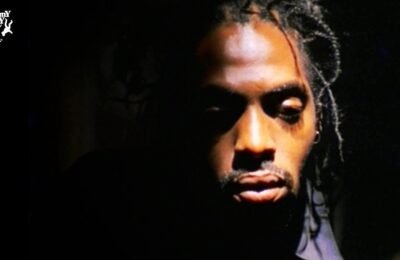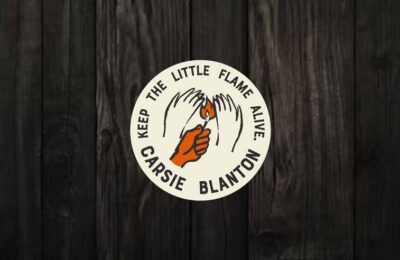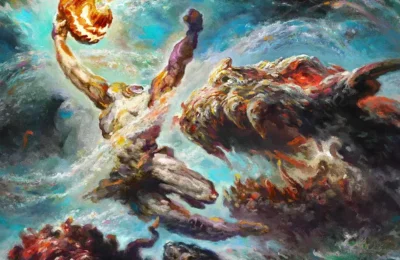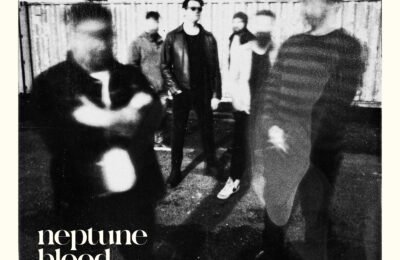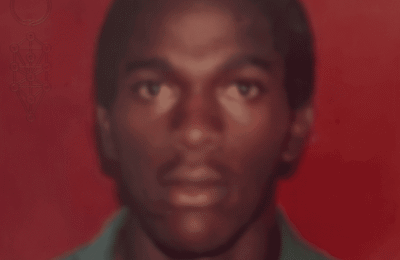Led Zeppelin is one of those bands that always sought out designers’ creativity for their album covers. By the time they released Physical Graffiti in 1975, the band had already collaborated with Zacron for their third album and Hipgnosis for Houses of the Holy. Led Zeppelin IV—often referred to as the Untitled Album—featured no band name on the cover, a deliberate response to media claims that Zeppelin could sell anything simply by putting their name on it. The album also boasted powerful artwork on both the cover and inside the gatefold. So when Physical Graffiti was on the horizon, fans eagerly anticipated what Zeppelin would come up with next. And boy, they weren’t disappointed.
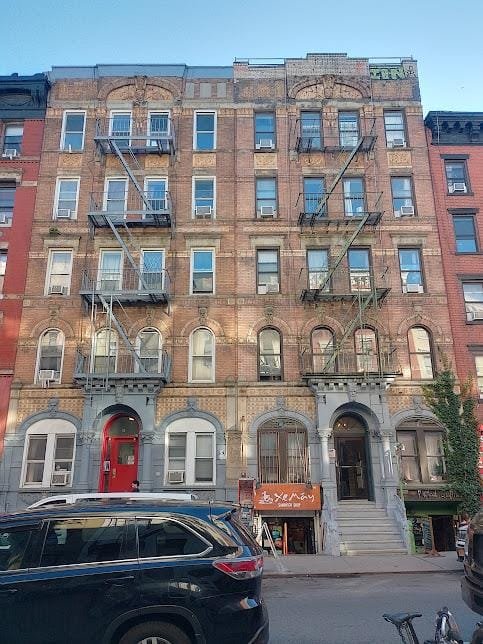
This time, the band chose Peter Corriston for the challenge. Corriston had already designed covers for Badfinger (Ass, 1973) and Rod Stewart (Sing It Again Rod, 1973). For Zeppelin’s new album, he set out to find the perfect building that would fit a square format—ideal for an album cover. After weeks of searching New York City, he finally found it while walking past a tenement building at 96-98 St. Mark’s Place. He later explained, “I had come up with a concept for the band based on the tenement, people living there, and moving in and out.”
In the end, not one but two adjacent five-story buildings were chosen. However, to make them fit the album’s square frame, Corriston had to crop out the fourth floor. Instead of opting for the traditional gatefold design, he created a die-cut cover featuring cut-out windows. The front image depicted the building in daylight, while the back showed it at night.
It has been suggested that Corriston drew inspiration from José Feliciano’s Compartments album cover. The die-cut cover was designed by Frank Mulvey and featured inner illustrations by Bernie Karlin. Like Compartments, Physical Graffiti allowed the inner sleeves to be seen through the cut-out windows.
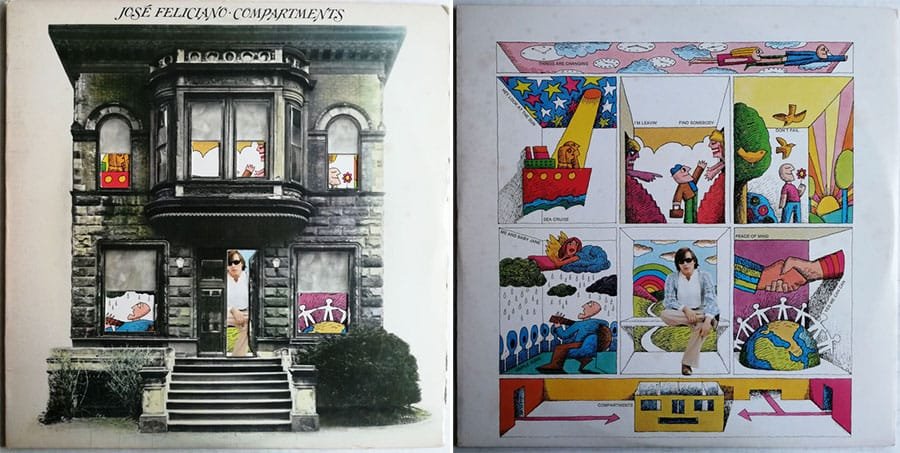
This is where the fun begins
Since Physical Graffiti was a double album, Corriston had two inner sleeves to play with. Both displayed images of the building on both sides, but the windows featured different portraits—many of them of famous figures. This fictional building had a lot of interesting tenants:
- JFK assassin Lee Harvey Oswald
- Buzz Aldrin, the second man to walk on the moon
- Elizabeth Taylor as Cleopatra
- The Virgin Mary
- Members of The Wizard of Oz cast
- Led Zeppelin members in drag
- Peter Grant, Zeppelin’s formidable manager
- Bodybuilder Charles Atlas
- Marcel Duchamp
- Pope Leo XIII
- Comedy duo Laurel & Hardy
- King Kong
- Comedian W.C. Fields
Additionally, the bottom-right windows all featured images from Queen Elizabeth II’s coronation.
To complete the design, Corriston collaborated with artistic director and designer Mike Doud. They created a middle insert with windows displaying letters that spelled out the album’s title, along with creative lettering for the tracks list and liner notes. Lucky owners of the album could mix and match the inner sleeves, any side they want, revealing different faces in the windows or spelling out Physical Graffiti using the insert.
A legendary cover, A Grammy snub
Following the album’s release, Corriston was nominated for Best Album Package at the 1976 Grammy Awards. Unfortunately, he lost to Jim Ladwig’s artwork for Honey by the Ohio Players. Despite multiple Grammy nominations for Led Zeppelin album designs (Led Zeppelin II, Houses of the Holy, Presence, and In Through the Out Door), none ever won.
However, Corriston would later claim victory in 1982, winning the award for Tattoo You by The Rolling Stones. He went on to design several other Stones albums, including Some Girls (another die-cut design), Emotional Rescue, and Uncovered. In a fitting nod to Physical Graffiti, The Rolling Stones filmed the music video for Waiting on a Friend—a single from the same album that won a grammy to Corriston—on the steps of 96-98 St. Mark’s Place. The video opens with Mick Jagger and Keith Richards meeting on the steps of #96 before strolling toward 1st Avenue to join the rest of the band.
Despite its manufacturing complexities—which even delayed the album’s release—the artwork for Physical Graffiti became legendary. The album itself was a massive success and remains one of Led Zeppelin’s greatest works. But which made which legendary? Did the album’s brilliance immortalize its artwork, or did the iconic cover elevate the album to mythical status? Either way, 96-98 St. Mark’s Place has since become a pilgrimage site for rock ‘n’ roll fans visiting New York City.
